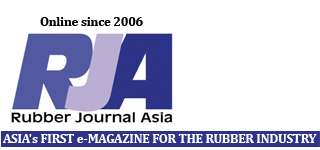Rubber exports are on pace to double by 2016 even as plunging prices hit the international market, according to experts.
Prices for sheet rubber fetched 120 baht (US$3.66) a kilogram in Thailand in 2011, but by last week had dropped to 51 baht a kilogram – the lowest in five years, according to Bangkok’s Rubber Research Center.
Yet Myanmar’s producers say that while prices are currently falling, fundamentally the crop has a strong future in the country.
Although the local rubber industry is in the shadow of the world’s largest exporter, Thailand, it has been growing rapidly since 2005, according to U Khaing Myint, secretary general of Myanmar Rubber Planters and Producers Association.
“Rubber production is increasing, and I think volumes can double by 2016 compared to now,” he said.
“But to compete with Thailand, the world’s top producer and exporter of rubber, that we still can’t do.”
While RSS3 rubber sold for about $1600 a tonne on most international exchanges last week, it fetched only $1300 on local Myanmar markets due partly to lower quality.
Myanmar exported about 170,000 tonnes last year while Thailand exported 3.4 million tonnes. About 70 percent of Myanmar’s exports headed to China in 2012-13, with the rest to other regional economies and 8pc was used internally.
Meanwhile, Thailand has faced public protests after the rubber price plunge left the industry reeling.
Dozens of farmers gathered in the southern towns of Surat Thani and Krabi last week to urge Thailand’s new military rulers to do more to arrest tumbling prices that have left many facing financial ruin.
The protests are a significant test for the generals now running the country. They vowed an end to Thailand’s history of populist subsidies as part of their justification for seizing power in May.
Myanmar, however, faces significant limitations within the industry.
While Thailand produces a range of different rubber grades, much of Myanmar’s production is lower quality, which generates less revenue for firms.
Experts say it is important to look at improving quality to build a more successful industry.
“The sector has been growing rapidly, so we are looking at how we can do upgrades and transform to more value-added with his quality, because Myanmar is currently exporting very low grade [rubber],” said Paul Baker, chief executive of International Economics Ltd.
Not only quantity and quality ought to rise, but Myanmar also needs to diversify the markets it exports to.
Myanmar rubber experts also receive preferential market access to the European Union, but quality is too low to take advantage of this, said U Khaing Myint.
So far only one test shipment of 20 tonnes has been sent to Europe.
Mon State is the main centre for Myanmar’s rubber industry, though a number of other states and regions have plantations, including Tanintharyi and Kayin. Indeed, apart from possibly Mandalay and Magwe Regions, there is potential to grow rubber across the entire country.

